John Huston's career as a director covers 47 credited films. It began in 1941 with "The Maltese Falcon" and ended in 1987 with "The Dead". His career as an actor, yes he acted, covered 55 film credits. They began with his only "Extra" role in one of the last silent movies, 1929's "The Shakedown", and ended in 1987 in a made for television movie entitled "Mister Corbett's Ghost".
Then there were his 40 on screen writing credits. This aspect of John Huston's life started in 1930 with a picture entitled "The Storm" and ended 58 years later in 1988 with the screenplay for "Mr. North". Additionally Huston produced 15 motion pictures starting during World War 2. At that time he was assigned to the Army Signal Corps and made the documentary "The Battle of San Pietro" for propaganda purposes. John Huston's writing career would end in 1988 with "Mr. North".

So how do you cover such a career in a Blog?
Answer: You don't!
You leave it to the biography writers. This article is about four motion pictures I enjoyed when they first came out and still do. All four are examples of John Huston's Art and perhaps a little of his Ego. One of them was a financial failure, but wasn't Huston's fault or for the matter was the picture he made. One pushed the limits of the accepted on screen morality of the time. One was a guessing game within a detective story and another brought a classic American novel to the big screen. That last feature is where I start.
MOBY DICK 1956
Prior to John Huston's feature there were three and a half filmed versions of Herman Melville's 1851 novel originally published in Great Britain as "The Whale". The first screen adaptation was the 1926 silent picture "The Beast" starring John Barrymore as Captain Ahab.
This changed story line tells of Ahab and is half brother Derek. They both love the same women and on a whaling trip find themselves together. Derek pushes Ahab overboard hoping to kill him and, then, win the love of Esther completely.
However, Ahab survives, but has lost his leg to the "White Whale". He returns home, but Esther rejects him upon seeing his now "Peg Leg". At this point in the story Ahab becomes a heroic figure by not blaming Derek for his injury. He also realizes how "Shallow" a person Esther really is and leaves on an epic quest to kill "The Sea Beast".
The 1930 sound picture "Moby Dick" is a remake of "The Sea Beast" and also starred John Barrymore as Captain Ahab. In this revision of the 1926 story line. Ahab is in love with Faith Mapple and she with him. The change here is that when Ahab returns with his leg replaced by a wooden one. He believes Faith doesn't love him anymore and goes off in search of "Moby Dick". In the end love conquerors all and the two are reunited.
1954 saw the first made for television version of "Moby Dick" on the "Hallmark Hall of Fame" anthology series.
In 1955 Orson Wells wrote a play entitled "Moby Dick-Rehearsed". This is my one half version of Melville. As the play is about a group of actors rehearsing a play about Melville's whale. A performance of Wells' production was filmed, but the picture is considered lost.
However, the next version of the story would be filmed by John Huston.

Like most of John Huston's feature films the story behind it's making is as interesting as the picture itself. Initially Houston's idea was to have his father actor Walter Huston portray Captain Ahab. However, Walter passed away on April 7, 1950 and no screenplay had yet been created.
For the screenplay of Melville's 1,936 page novel John Huston chose Ray Bradbury. Bradbury informed Huston that he'd
never been able to read the damned thing
I can understand that statement as I tried to get through it three times and stopped.
One of the problems is Herman Melville's changes in the style of writing, becomes tiresome to some people. As Melville weaves many themes into the narration by Ishmael and changes his tone. For example, by borrowing from Nathaniel Hawthrone, whom he basically dedicated the book, to that of William Shakespeare. This is one reason why there are so many abridged versions with annotations and not completely because of the original's length. I will admit though that I did read the "Classics Illustrated" version completely once.
I can joke about that here, because many people have attempted the novel with the same results as Ray Bradbury and myself. Both the length and style of writing was the challenge for Ray Bradbury after he agreed to write a screenplay for John Huston.
As many who worked with Huston, or had exchanges with the man will relate. He can be very trying and his personality can get to you. In the case of Ray Bradbury the time he spent in Ireland, 1953 into 1954, writing with the director, became the basis for a novel. The title being a parody in itself "Green Shadows, White Whale" about that experience. The novel was published in 1992.

IF you're familiar with John Huston and his effect on the people around him. Then you will probably recognize Ray Bradbury's title plays on Peter Viertel's 1953 novel "White Hunter, Black Heart" that Clint Eastwood made into a 1990 motion picture. The novel is based upon Katherine Hepburn's experiences making John Huston's "The African Queen".
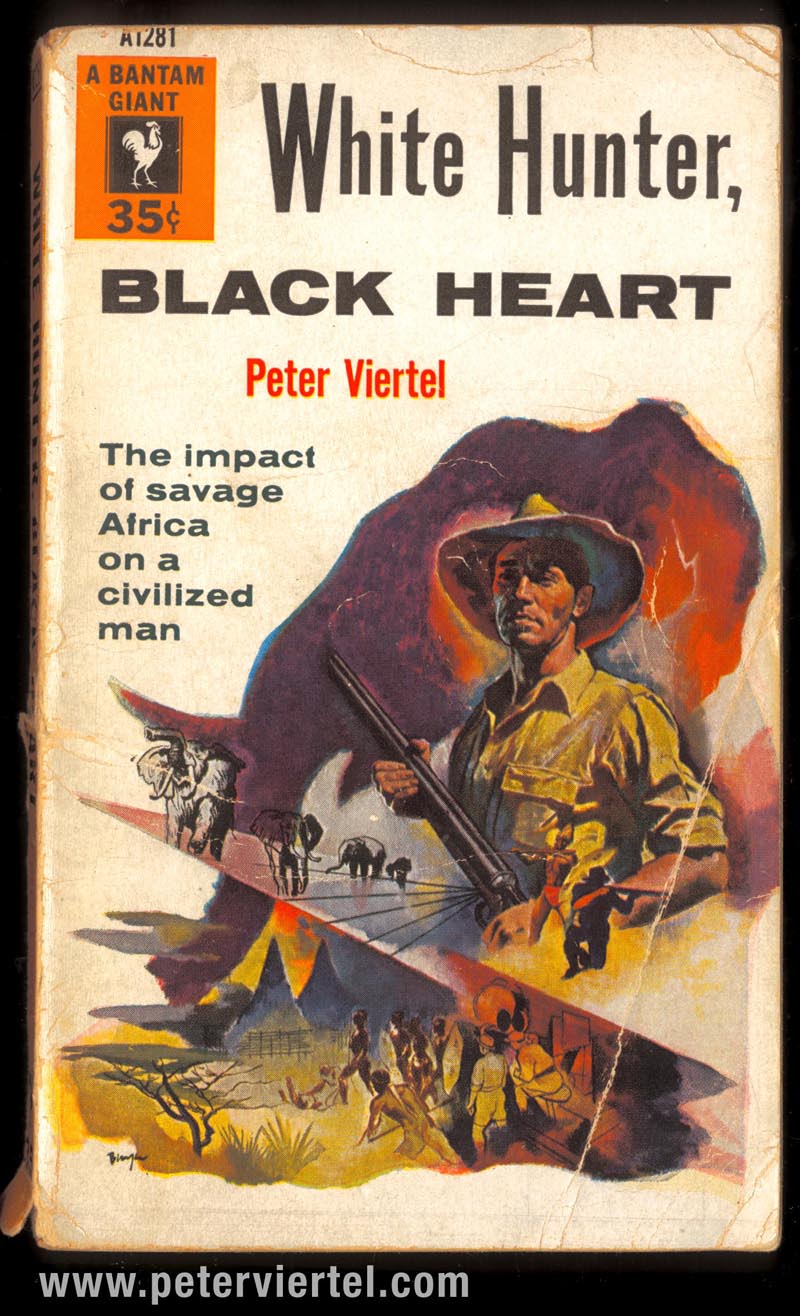
Here's the direct link to the author's website about the novel:
http://www.peterviertel.com/white-hunter-black-heart-peter-viertel.php
Back in the September 1984 issue of "Gallery Magazine" Ray Bradbury first published a short story entitled "Banshee". It was also about the torment Huston gave him at his house in Ireland. Which included impromptu Ghost Stories and constant insults and pranks. However, the resulting script co-written by John Huston, of course, was completed and the production moved to casting and bankrolling.
Screenplay in hand John Huston headed to the brothers who had financed his 1952 motion picture about the French painter Herni de Toulouse-Lautrec "Moulin Rogue".

The Brothers were Walter, Harold and Marvin Mirisch. After reading the screenplay they proceeded to made a deal with Warner Brothers. The Mirisch's would give the studio the rights to the film for seven years, After that time the picture would revert back to the Mirisch Brothers.
The apparent next question was who would play the critical role of Captain Ahab? Described by the literature website "SparkNotes" in this way:
http://www.sparknotes.com/lit/mobydick/characters.html
The egomaniacal captain of the Pequod. Ahab lost his leg to Moby Dick. He is single-minded in his pursuit of the whale, using a mixture of charisma and terror to persuade his crew to join him. As a captain, he is dictatorial but not unfair. At moments he shows a compassionate side, caring for the insane Pip and musing on his wife and child back in Nantucket.For the role John Huston was given no choice! To obtain the financing he needed the Mirisch Brothers told him to use Gregory Peck. Peck on the other hand eventually found out that he was not Huston's choice for the role.
This had occurred after the director, to get his needed financing, had talked Peck into taking a role he felt uncomfortable with playing. Bad blood existed between the two for years, but at one time Gregory Peck attempted to patch their friendship up. John Huston would have nothing to do with that idea. Even though Huston's daughter Anjelica stated he adored the actor.

Anyone familiar with the Melville novel, or at least the basic story. Knows there are three other critical characters. John Huston chose one American, one British and one Polish actor for these roles.
Playing the narrator of the Ray Bradbury/John Huston screenplay, as in the novel, was the character of Ishmael.
"SparkeNotes" describes the character as:
The narrator, and a junior member of the crew of the Pequod. Ishmael doesn’t play a major role in the events of the novel, but much of the narrative is taken up by his eloquent, verbose, and extravagant discourse on whales and whaling
American actor Richard Basehart was given the part.
Starbuck is the First Mate of the "Pequod" and is described by "SparksNotes" as:
The first mate of the Pequod. Starbuck questions Ahab’s judgment, first in private and later in public. He is a Quaker who believes that Christianity offers a way to interpret the world around him, although he is not dogmatic or pushy about his beliefs. Starbuck acts as a conservative force against Ahab’s mania.British actor Leo Glenn, a favorite of mine, was given this role. Glenn was an acting equal of Peck and in my opinion a perfect choice for the man that confronts Ahab.

Portraying South Sea Islander and harpooner Queequeg was Polish actor Friedrich Anton Maria Hubertus Bonifacius Graf von Ledebur -Wichein known simply as Friedrich von Ledebur.
Queequed is described by SparksNotes as:
Starbuck’s skilled harpooner and Ishmael’s best friend. Queequeg was once a prince from a South Sea island who stowed away on a whaling ship in search of adventure. He is a composite of elements of African, Polynesian, Islamic, Christian, and Native American cultures. He is brave and generous, and enables Ishmael to see that race has no bearing on a man’s character.
The supporting cast included British actor Harry Andrews as Stubb, Scottish actor James Robertson Justice as Captain Boomer, American actor Orson Wells as Father Mapple. and American actor Royal Dano as Elijah.
The next problem facing John Huston was were to shoot the picture? There was no way the real New Bedford, Massachusetts could be used even in 1955 when filming was scheduled to begin. Exterior town shots were of the resort city of Youghal, County Cork, Ireland.

Huston shot some of his scenes at Canical, a whaling parish, on the Portuguese island of Madeira. Parts of the production were filmed on Las Canteras Beach, Las Palmas de Gran Canaria, in the Canary Islands and initial shooting started in Wales in the U.K.
THE MYTH OF HUSTON'S GREAT WHITE WHALE.
Like in the children's game of telephone. A story started at the time from a real incident involved in making the motion picture. The true facts grew into mythic proportions over time. It was finally resolved by the acclaimed cinematographer Oswald Morris, years later, in his autobiography "Huston, We Have A Problem".
The myth tells of three 60 foot rubber whales having been constructed and used in "Moby Dick". All three were lost during filming and became navigational problems for shipping.
However, according to Oswald Morris they never existed.
There was one 75 foot, 12 ton whale constructed and it did get lost in a fog bank after coming loose from it's tow line. The real problem here was not navigational, but that star Gregory Peck was attached to the body of the whale. The actor confirmed the story in 1995.
"Moby Dick" did have a real problem with it's budget. The original budget authorized by the Mirisch Brothers was $2 million 1955 dollars. When the film was completed the actual cost more than doubled to an estimated $4.4 million dollars. The Mirisch Brothers were financially crippled and sold their interest in the motion picture to United Artists. UA honored the original 7 year contract with Warner Brothers and took control of the motion picture after that period ended.
As was the norm at the time for many motion pictures. Dell Comics issued a motion picture comic book version of "Moby Dick" released in August 1956.

Two months earlier on June 27, 1956 John Huston's motion picture was released. The critics attacked the minimal story line as compared to Herman Melville's original work. In defense of Huston and Ray Bradbury. It is very hard to turn a 1,936 page novel into a 116 minute motion picture.
For nine year old Lloyd watching the feature in 1956. "Moby Dick" was a grand adventure and most reviewers today agree to my assessment.
THE BARBARIAN AND THE GEISHA 1958
John Huston had a love for the work of Japanese director Akira Kurosawa and others. Artists who used Feudal Japan as a setting in such movies as Kurosawa's classic "The Seven Samurai", or Hiroshi Inagaki's Samurai trilogy.
Huston wondered if an American director could make a similar motion picture shot in Japan of equal quality. His only problems with such an idea was turning his dream into a screenplay and, of course, finding a backer for such an unusual and personal project.
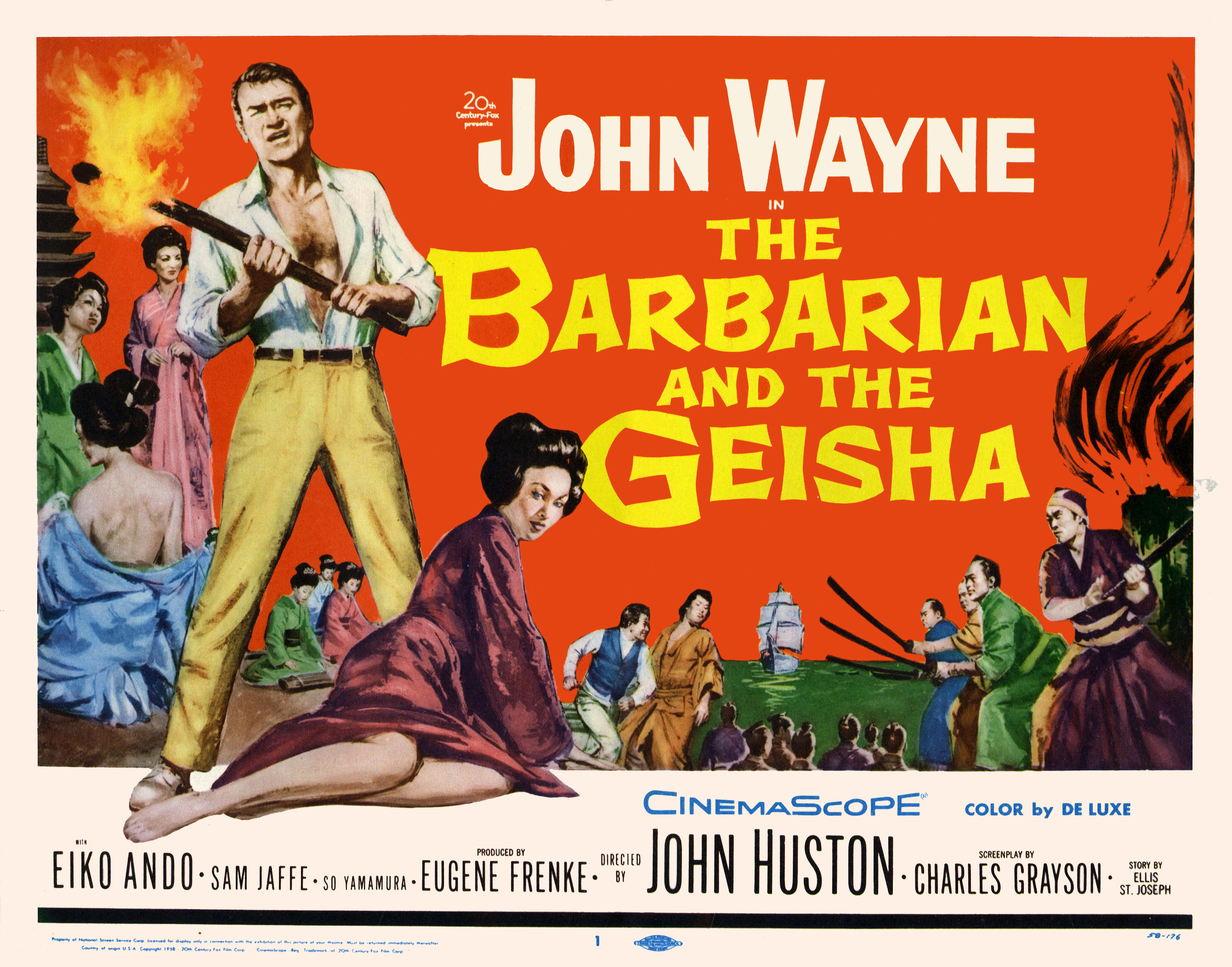
To make his idea interesting to an American audience. John Huston picked the story of Townsend Harris. Harris was the first U.S. Consul-General to Japan. He had been sent to the country by President Franklin Pierce in 1856 during it's Edo Period.
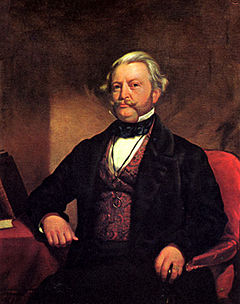
Part of the historical truth in Huston's screenplay was that when Townsend Harris set up the first American Consulate at the Gyokusen-ji Buddhist Temple in Shimoda, Shizuoka Prefecture. He had a letter from President Pierce to the Shogun who was located at the Japanese capital in Edo. Harris refused to give it to anyone but the Shogun personally and it took 18 months before he was finally invited to appear.
Four months after meeting the Shogun. Townsend Harris negotiated the "Treaty of Amity and Commerce" aka: the "Harris Treaty of 1858". The treaty was a trade agreement between Japan and the United States and increased Western influence on the Japanese people.
Harris would return to the United States in 1861 his mission accomplished.
In 2006 the "City College of New York" celebrated the arrival of Townsend Harris in Japan. In a written program for the event. The following quotation from Harris' counterpart Japanese diplomat Moriyama is given:
You have been more than a friend. You have been our benefactor and teacher. Your spirit and memory will live forever in the history of Japan.The rights to make a motion picture about Townsend Harris were originally owned by director Anthony Mann. In an agreement with 20th Century Fox. Mann had sold the rights to the Townsend Harris story to the studio. As a result John Huston was able to pick it up.
Huston's vision of American/Japanese history was epic. The on screen credits for the screenplay and story went to Charles Grayson, Nigel Balchin, James Edward Grant and Alfred Hayes. Not showing were Ellis St. Joseph who wrote the original story outline and John Huston.
John Huston had worked with Russian born producer Eugene Frenke before. Frenke had co-produced Huston's 1957 World War 2 motion picture "Heaven Knows Mr. Allison" starring Robert Mitchum and Deborah Kerr. Frenke would only produced this project, if John Huston could find a bankable leading man to play Harris. Shades of Gregory Peck with "Moby Dick".
Also as the film was being made by 20th Century Fox. The.Studio Head Daryl F. Zanuck was involved in producing the picture, but without on screen credit. He also demanded a bankable leading man. John Wayne heard of the production and for his own reasons,came on board as Townsend Harris.
Those reason can be found in my other blog article "John Wayne Four Gutsy Role Choices" at:
http://www.bewaretheblog.com/2015/04/john-wayne-four-gutsy-role-choices.html
Portraying the role of Hendrick (Henry) Conrad Joannes Heusken the Dutch-American interpreter used by the real Harris was actor Sam Jaffe. Jaffe had played the High Lama in Frank Capra's 1937 production of James Hilton's "Lost Horizon" starring Ronald Coleman and Jane Wyatt. Along with the title character of George Stevens' 1939 "Gunga Din" starring Cary Grant, Victor McLagen and Douglas Fairbanks, Jr.. To science fiction fans Sam Jaffe was Professor Jacob Barnhardt in Robert Wise's 1951 "The Day the Earth Stood Still" starring Michael Rennie and Patricia Neal.

It should be noted that the real Japanese diplomat Moriyama is nowhere to be seen in this film, but may or may not have been in the original cut. More shortly.
Portraying Governor Tamura was So (Soh) Yamamura. It wouldn't be until 1970 when he played Admiral Isoroku Yamamoto in "Tora, Tora, Tora" that most American's knew the actor. For fans of Toho studio's science fiction and Gojira (Godzilla) films. Soh Yamamura was the Prime Minister in 1961's "The Last War" and once again as Japan's Prime Minister in 1991's "Godzilla vs King Ghidorah". Which was the last of the 134 films the actor made.
Soh Yamamura as the governor.
Now we come to the fourth main character in the story and "The Geisha" of the title. There is a story about "OKICHI" that is partly truth and partly myth.

The real Kichi Satitoru, known as "Okichi", was placed into the household of Townsend Harris by Japanese authorities. She was told it was her duty to get to "know" Harris and find out all she could about him and his plans. Huston took this story and created his on screen platonic love story.
In the motion picture Japanese actress Eiko Ando portrayed "Okichi". Ando was also the voice over narrator of the story. She appears to have only one other credit and that was an appearance to promote the feature film on American television's "The Ed Sullivan Show".
There are different sources with slightly different versions of what might have been the truth between Harris and Okichi. Kathleen S. Kitao in her "History and Legend in Shimoda, Japan". An article published by the "Doshisha University Faculty of Culture and Informational Science". States that Kichi Satitoru was a 17 year old girl, Townsend Harris was 54 at the time, who was just a housekeeper and was let go after only 3 days.
While the Japanese story has "Okichi" having a love affair with the American. What is fact is that after Townsend Harris left Japan. Kichi Satitoru was called "Barbarian Okichi" and eventually committed suicide in 1892. Which would lead me to believe there was more than a 3 day employment, or the village people taunted her over what they supposed happened. The authoritative history of Japan found in the "Kodansha Encyclopedia seems to support Kitao's story though.
All of this was incorporated into John Huston's envisioned "EPIC" motion picture.
Once filming was completed it was back to the United States for editing. Huston worked closely with 20th Century Fox film editor Stuart Gilmore and may have edited some sequences himself. Then it was time to present his cut for approval by Daryl F, Zanuck and the powers that be at the studio.
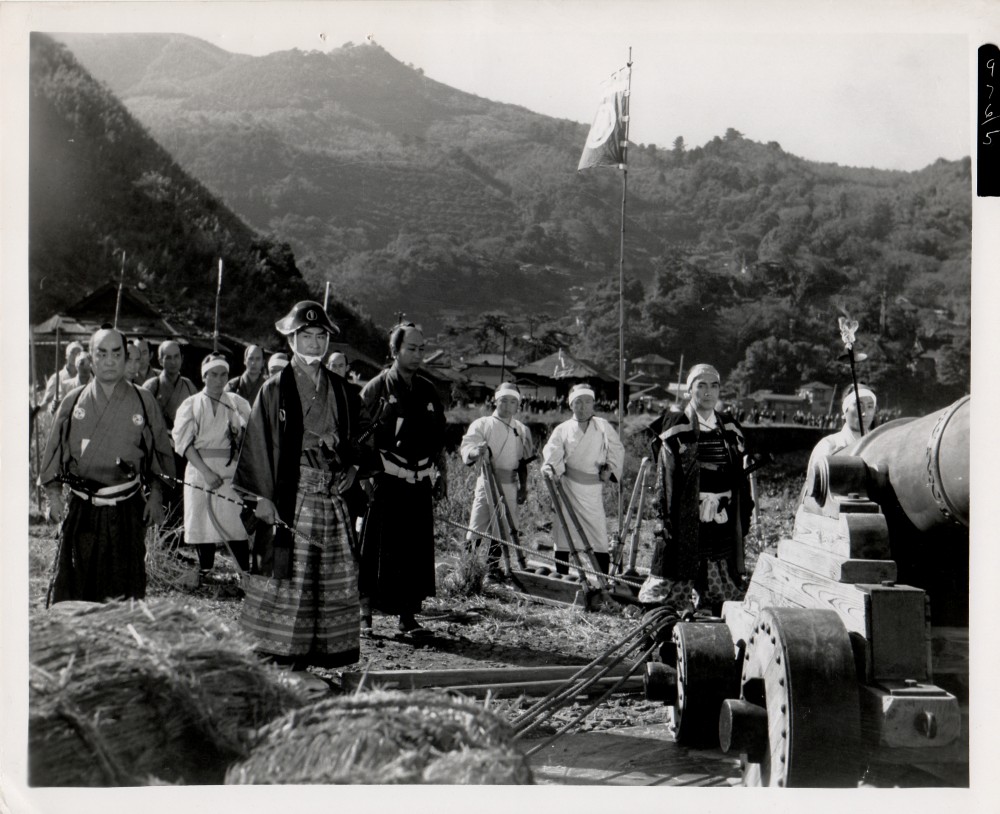
What that director's cut submitted by John Huston to Zanuck looked like we may never know. All footage not used for the theatrical release was apparently lost, or destroyed by 20th Century Fox.
What we do know is that the 105 minute motion picture, I saw in September 1958,was not the Huston cut edited under his direction by Stuart Gilmore. We also know that whatever was submitted to Daryl F. Zanuck by John Huston required an Intermission due to it's length. We do know that 20th Century Fox's thinking wasn't based upon the story presented, but how much money could be made at the box office. Which translated to multiple runs on any day of the feature and not the usual two screenings, including a 15 minute Intermission, John Huston's film would require.
It should be noted that 20th Century Fox had released the Rodgers and Hammerstein musical "South Pacific" earlier in 1958. The film had an Intermission and was a Reserved, higher ticket prices, Seat Engagement. That picture had a running time of 171 minutes which included the Overture, Intermission and Exit Musical Score. So John Huston's cut of "The Barbarian and the Geisha" was not really out of the question to the studio at the time..
Additionally during 1958 United Artist released director William Wyler's Epic Western "The Big Country" starring Gregory Peck, Jean Simmons and Charlton Heston. Actor Burl Ives won the Best Supporting Actor award and the film was a major Box Office hit. It ran, without having an Intermission, 166 minutes in length. Only five minutes shorter than "South Pacific" with an Intermission.
Also, from 20th Century Fox was an adaptation of writer Irwin Shaw's "The Young Lions". A World War 2 film starring Marlon Brando, Montgomery Cliff and Dean Martin. That picture had a running length of 167 minutes without an Intermission.
So what was really behind Zanuck's refusal to release John Huston's "The Barbarian and the Geisha" as Huston wanted?
John Huston needed JOHN WAYNE to get the funding to make his epic, but one theory on why 20th Century Fox made such drastic cuts to the finished motion picture was JOHN WAYNE. Daryl F. Zanuck and others thought he couldn't actually carry such a historical picture with those outside of his fan base, because JOHN WAYNE was only a COWBOY actor. A belief that most major studios held about him. That belief on this picture and three others is the basis for my article on Wayne I mentioned above.
The Motion Picture Critics did attack Wayne's portrayal and besides using the "Cowboy" slant. They mentioned how unease he appeared in the role and even mentioned his size as a problem compared to the Japanese actors he towered over.

Another mentioned argument is over the subject matter and the idea that American's would not sit through a motion picture about Japan. Although the Japanese actors spoke English and no subtitles were involved.
This was still a carry over from World War 2 between many American's towards the Japanese. Yet, the film as envisioned by John Huston might have helped to alleviate those tensions by showing a bit of Japanese/American history.
So how long was Huston's original cut? Again we may never really know as I said his cut and any other footage for the picture are gone. There is no chance of discovering that version as it was never released and was used for the re-editing by 20th Century Fox to get their more money making showings.
John Huston was angry at the studio over destroying his motion picture and refused to have his name appear, BUT the studio said he had a contract and he was stuck. "The Barbarian and the Geisha" as released was a financial failure and an embarrassment to both John Huston and it's star John Wayne. Additionally John Huston filed a lawsuit over the picture and succeeded in stopping its showing, after its initial run, in the United States. You could not even find the film in this country until a 1998 VHS tape appeared and that was only a single run. The movie resurfaced in the United States as part of a four picture John Wayne DVD in 2014. Foreign copies were always available.
Personally I like it, but it's obvious that something is missing. There are scenes that just jump from one to another including separation of time and action. Dialogue implies that something happened, but as to what it was the audience never finds out.
Looking at John Huston's personal copy of the screenplay with his handwritten notations. His family and film historians believe the original version to be as much as twice the released running length. In short a completely different motion picture.
.
FREUD: THE SECRET PASSION 1962
Making a biographic motion picture about neurologist Sigmund Schlomo Freud creating his theory of psychoanalysis is not the most audience attractive idea. In fact when I saw the picture in 1962 Los Angeles. It was at the semi-Art House "Fine Arts Theater" in Beverly Hills. The only Los Angeles location during it's original release. Universal Studio's was uncertain how to promote the picture and handled it, initially, as a Special Screening film. At that time the feature was simply called "Freud".

When Universal Studios finally released Huston's work as a General Audience Release. A major change to the title had been made and "Freud" was no longer the one word title. The motion picture directed by John Huston would now be known world wide as " Freud: The Secret Passion" and the film's subject "Freud" was all but omitted in British publicity..
So what is the back story on the film?
In 1958 while battling 20th Century Fox over "The Barbarian and the Geisha". John Huston decided to make a motion picture based upon a five year period in the life of Sigmund Freud. His first challenge was finding a writer for such a work and he decided upon Jean-Paul Sartre. The French philosopher, playwright, novelist, political activist, biographer and literary critic was an interesting choice for the intellectual Huston and that was also his problem.
At first it appeared that the two men were of the same thinking about the purposed motion picture. Sartre submitted a 95 page outline for the feature film. However, when Jean-Paul Sartre submitted his screenplay. John Huston was shocked to discover had he filmed what Sartre had submitted. The total running time for the picture would be at least five hours. He asked Jean-Paul Sartre to adjust his screenplay to a more manageable one. Instead of a shorter version that Huston wanted, The new version would have made an eight hour or more motion picture.
The men argued and Jean-Paul Sartre pulled out of the production and told John Huston not to put his name on the finished picture. So Huston turned to Charles Kaufman a writer for "The New Yorker" magazine to come up with a new story to work a screenplay from.
Kaufman was a good choice. That year he had been nominated by the British Academy of Film and Television Arts ( BAFTA) for his screenplay on "The Story of Esther Costello". Charles Kaufman worked with John Huston's producer Wolfgang Reinhardt on the new screenplay for "Freud".
Reinhardt had been one of the writers on the Bette Davis, Paul Muni 1939 feature "Juarez", associate producer on the Edward G. Robinson 1940 "Dr. Ehrlich's Magic Bullet" and co-produced with director/producer Vittorio De Sica "Indiscretion of an American Wife" starring Jennifer Jones and Montgomery Clift in 1953.
Now with a screenplay John Huston needed to cast the major roles in "Freud".
For the title role he chose Montgomery Clift. Movie viewers had seen the actor last in Stanley Kramer's 1961 feature "Judgement at Nuremberg" in which he won the Best Supporting Actor Oscar. That same year he had co-starred with both Clark Gable and Marilyn Monroe in "The Misfits" The last movie both made before their deaths and was actually released shortly afterwards.
Below first is a photo of Freud at the time the picture covers. It is followed by one of Clift in the film.
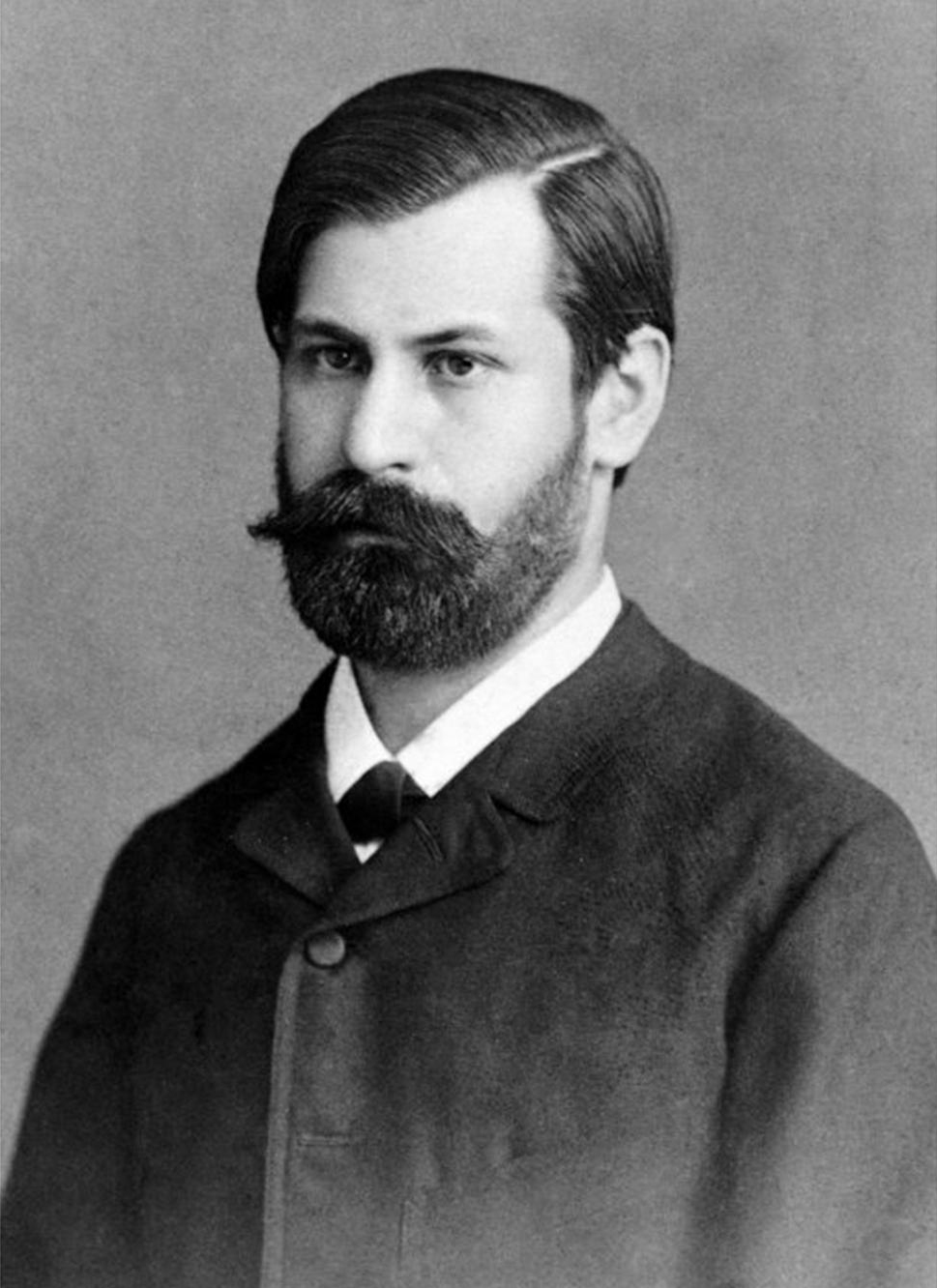

The screenplay takes cinematic privilege by condensing years of Freud's work into what seems, on screen, a matter of months. The same privilege is taken by combining many of the neurotic symptoms Sigmund Freud studied into one created patient Cecily Koertner portrayed by Susannah York.

What that director's cut submitted by John Huston to Zanuck looked like we may never know. All footage not used for the theatrical release was apparently lost, or destroyed by 20th Century Fox.
What we do know is that the 105 minute motion picture, I saw in September 1958,was not the Huston cut edited under his direction by Stuart Gilmore. We also know that whatever was submitted to Daryl F. Zanuck by John Huston required an Intermission due to it's length. We do know that 20th Century Fox's thinking wasn't based upon the story presented, but how much money could be made at the box office. Which translated to multiple runs on any day of the feature and not the usual two screenings, including a 15 minute Intermission, John Huston's film would require.
It should be noted that 20th Century Fox had released the Rodgers and Hammerstein musical "South Pacific" earlier in 1958. The film had an Intermission and was a Reserved, higher ticket prices, Seat Engagement. That picture had a running time of 171 minutes which included the Overture, Intermission and Exit Musical Score. So John Huston's cut of "The Barbarian and the Geisha" was not really out of the question to the studio at the time..
Additionally during 1958 United Artist released director William Wyler's Epic Western "The Big Country" starring Gregory Peck, Jean Simmons and Charlton Heston. Actor Burl Ives won the Best Supporting Actor award and the film was a major Box Office hit. It ran, without having an Intermission, 166 minutes in length. Only five minutes shorter than "South Pacific" with an Intermission.
Also, from 20th Century Fox was an adaptation of writer Irwin Shaw's "The Young Lions". A World War 2 film starring Marlon Brando, Montgomery Cliff and Dean Martin. That picture had a running length of 167 minutes without an Intermission.
So what was really behind Zanuck's refusal to release John Huston's "The Barbarian and the Geisha" as Huston wanted?
John Huston needed JOHN WAYNE to get the funding to make his epic, but one theory on why 20th Century Fox made such drastic cuts to the finished motion picture was JOHN WAYNE. Daryl F. Zanuck and others thought he couldn't actually carry such a historical picture with those outside of his fan base, because JOHN WAYNE was only a COWBOY actor. A belief that most major studios held about him. That belief on this picture and three others is the basis for my article on Wayne I mentioned above.
The Motion Picture Critics did attack Wayne's portrayal and besides using the "Cowboy" slant. They mentioned how unease he appeared in the role and even mentioned his size as a problem compared to the Japanese actors he towered over.

Another mentioned argument is over the subject matter and the idea that American's would not sit through a motion picture about Japan. Although the Japanese actors spoke English and no subtitles were involved.
This was still a carry over from World War 2 between many American's towards the Japanese. Yet, the film as envisioned by John Huston might have helped to alleviate those tensions by showing a bit of Japanese/American history.
So how long was Huston's original cut? Again we may never really know as I said his cut and any other footage for the picture are gone. There is no chance of discovering that version as it was never released and was used for the re-editing by 20th Century Fox to get their more money making showings.
John Huston was angry at the studio over destroying his motion picture and refused to have his name appear, BUT the studio said he had a contract and he was stuck. "The Barbarian and the Geisha" as released was a financial failure and an embarrassment to both John Huston and it's star John Wayne. Additionally John Huston filed a lawsuit over the picture and succeeded in stopping its showing, after its initial run, in the United States. You could not even find the film in this country until a 1998 VHS tape appeared and that was only a single run. The movie resurfaced in the United States as part of a four picture John Wayne DVD in 2014. Foreign copies were always available.
Personally I like it, but it's obvious that something is missing. There are scenes that just jump from one to another including separation of time and action. Dialogue implies that something happened, but as to what it was the audience never finds out.
Looking at John Huston's personal copy of the screenplay with his handwritten notations. His family and film historians believe the original version to be as much as twice the released running length. In short a completely different motion picture.
.
FREUD: THE SECRET PASSION 1962
Making a biographic motion picture about neurologist Sigmund Schlomo Freud creating his theory of psychoanalysis is not the most audience attractive idea. In fact when I saw the picture in 1962 Los Angeles. It was at the semi-Art House "Fine Arts Theater" in Beverly Hills. The only Los Angeles location during it's original release. Universal Studio's was uncertain how to promote the picture and handled it, initially, as a Special Screening film. At that time the feature was simply called "Freud".

When Universal Studios finally released Huston's work as a General Audience Release. A major change to the title had been made and "Freud" was no longer the one word title. The motion picture directed by John Huston would now be known world wide as " Freud: The Secret Passion" and the film's subject "Freud" was all but omitted in British publicity..
So what is the back story on the film?
In 1958 while battling 20th Century Fox over "The Barbarian and the Geisha". John Huston decided to make a motion picture based upon a five year period in the life of Sigmund Freud. His first challenge was finding a writer for such a work and he decided upon Jean-Paul Sartre. The French philosopher, playwright, novelist, political activist, biographer and literary critic was an interesting choice for the intellectual Huston and that was also his problem.
At first it appeared that the two men were of the same thinking about the purposed motion picture. Sartre submitted a 95 page outline for the feature film. However, when Jean-Paul Sartre submitted his screenplay. John Huston was shocked to discover had he filmed what Sartre had submitted. The total running time for the picture would be at least five hours. He asked Jean-Paul Sartre to adjust his screenplay to a more manageable one. Instead of a shorter version that Huston wanted, The new version would have made an eight hour or more motion picture.
The men argued and Jean-Paul Sartre pulled out of the production and told John Huston not to put his name on the finished picture. So Huston turned to Charles Kaufman a writer for "The New Yorker" magazine to come up with a new story to work a screenplay from.
Kaufman was a good choice. That year he had been nominated by the British Academy of Film and Television Arts ( BAFTA) for his screenplay on "The Story of Esther Costello". Charles Kaufman worked with John Huston's producer Wolfgang Reinhardt on the new screenplay for "Freud".
Reinhardt had been one of the writers on the Bette Davis, Paul Muni 1939 feature "Juarez", associate producer on the Edward G. Robinson 1940 "Dr. Ehrlich's Magic Bullet" and co-produced with director/producer Vittorio De Sica "Indiscretion of an American Wife" starring Jennifer Jones and Montgomery Clift in 1953.
Now with a screenplay John Huston needed to cast the major roles in "Freud".
For the title role he chose Montgomery Clift. Movie viewers had seen the actor last in Stanley Kramer's 1961 feature "Judgement at Nuremberg" in which he won the Best Supporting Actor Oscar. That same year he had co-starred with both Clark Gable and Marilyn Monroe in "The Misfits" The last movie both made before their deaths and was actually released shortly afterwards.
Below first is a photo of Freud at the time the picture covers. It is followed by one of Clift in the film.


The screenplay takes cinematic privilege by condensing years of Freud's work into what seems, on screen, a matter of months. The same privilege is taken by combining many of the neurotic symptoms Sigmund Freud studied into one created patient Cecily Koertner portrayed by Susannah York.
At the time of this picture Susannah York was known in the United States to only those few, like myself, who had seen the Alec Guinness and John Mills motion picture "Tunes of Glory" in 1960. York would be seen in the Best Picture Oscar winner for 1963 "Tom Jones".In 1969 the actress won a BAFTA for "They Shoot Horses Don't They" and was nominated for both a Best Supporting Actress Oscar and Golden Globe for that role.
There is an interesting article about the influence of Sigmund Freud on the motion picture industry published on "The Guardian's" website in 2001. It mentions the actress John Huston really wanted to cast in this role: Marilyn Monroe.
The third starring role was played by Larry Parks and was the real life Austrian physician in neurophsiology Dr. Josef Breuer. Parks had starred in "The Jolson Story" in 1946. He was nominated for the Best Actor Oscar for portraying singer Al Jolson in this fictional motion picture. Parks followed up the role in "Jolson Sings Again" in 1949. However, in 1951 he ran afoul of "The House Committee on Un-American Activities" by not "naming names" of Communist Party members he knew in the motion picture industry. Parks was "Black Listed" and MGM shelved a comedy he had made for three years. Parks next motion picture work was in the U.K. in a low budget picture entitled "Cross-Up" with Constance Smith.
Parks and his wife actress Betty Garrett, whose career was also affected by her husband's "Black Listing" started purchasing Los Angeles area real estate and became "Land Lords" with a larger income than they were making acting. In 1957 Larry Parks started appearing again on television, but his only motion picture role and his last was "Freud".
Below first a photo of the real Dr. Breuer followed by one of Larry Parks from the motion picture.


The fourth and final starring role went to actress Susan Kohner. She had been nominated for the Best Supporting Actress Oscar and won the Golden Globe for her role in 1959's "Imitation of Life". Kohner portrayed Freud's wife Martha. As above the first following image is of the real Martha Freud and the second of Susan Kohner with Montgomery Clift in the motion picture.

.jpg)
Within the supporting cast was David McCallum in the composite character of Carl von Schlossen. For those thinking of him in "The Great Escape", as Illya Kuryakin in "The Man from Uncle", or at the time of this writing Donald "Ducky" Mallard on the original television show "NCIS". You are in for a shock. McCallum plays a man with repressed sexual desires in "Freud" and demonstrates his vast acting talent as different sides of his character are revealed. By this point in his career David McCuallum had appeared in 32 different roles in both British motion pictures and television..
Below John Huston and Montgomery Clift discuss a sequence.

Even with it's apparently odd subject matter Hollywood didn't overlook the picture for the 35th Academy Awards. It was nominated for two Oscars. Best Original Screenplay, interesting in it's round about way to create it, and Best Original Score which was the first by Jerry Goldsmith. The film lost in both categories. The Golden Globes nominated the movie for Best Picture, Drama, Best Director John Huston, Best Actress Susannah York and Supporting Actress Susan Kohner.
I'll end this look at "Freud: The Secret of Passion" with two quotes by French historian and psychoanalyst Elizabeth Roundinesco in her work "A History of Psychoanalyst in France 1925-1985", University of Chicago Press, 1990. Miss Roundinesco wrote that the motion picture did not have any success but:
THE LIST OF ADRIAN MESSENGER 1963
"Gimmick Films" were still very popular in the early 1960's and "The List of Adrian Messenger" had a great one. The movie had cameo's from Frank Sinatra, Tony Curtis, Robert Mitchum and Burt Lancaster but they were all wearing make-up from John Chambers and his crew. The "Gimmick" was for the audience to identify them. After the mystery was solved and the film's story completed. These actor's removed their make-ups and the audience found out if they were correct. More about this semi-scam later.
Don't know the name John Chambers?
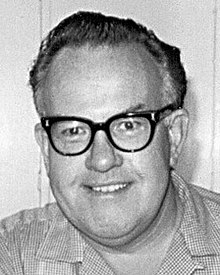
Ever see the 2012 motion picture "ARGO" starring Ben Affleck? Actor John Goodman played Chambers. He was part of the mission, actually known as the "Canadian Caper", by the CIA and Canada to rescue six American Diplomats held in Iran. He also was behind the original make-ups for the original "Planet of the Apes" among other films.
The motion picture's story is still fun. A writer named Adrian Messenger asks retired MI-5 operative and friend Anthony Gethryn, played by George C. Scott, to verify a list of ten names for him. Nothing more than that.
Before the above takes place. The audience has seen a strange man murder another man by causing an elevator to speed down multiple floors of an apartment house. He then crosses the murder victim's name off a list in a book. All the other names have been crossed off, but one Adrian Messenger.
After the conversation between Messenger and Gethryn. The audience next sees Adrian in line to check in for his airline flight. In back of him is a Minister who finds his luggage overweight and requiring extra money. Adrian convinces the airline attendant to let the Minister's bag go through as his own was underweight.
We next see the Minister enter a Men's room stall that has a washbasin and mirror in it. As the audience watches he removes his make-up and confirms that we're looking at Kirk Douglas.

The audience now knows the murderer, but not the motive.
Adrian's flight is blown up over the ocean and he is in the water on a piece of wreckage with another passenger. As the other man listen's Adrian keeps repeating a message for Jocelyn over and over and dies. The audience, of course, also hears the dying man's message.
Anthony Gethryn will discover that the sole survivor of the plane crash and the man who heard Messenger is an old friend from the French Secret Service during World War 2 Raul Le Borg. He is played by Jacques Roux.

It turns out the Le Borg has a "Trick Memory" and can recall Adrian's complete dying message. Gerthryn places it on a blackboard and begins to figure out what was meant by it.
Prior to this in the hospital Le Borg has met the Jocelyn of Adrian's message. She is played by Dana Wynter and is actually Lady Jocelyn Bruttenholm and has a young son. The son is now the last heir to the Bruttenholm title and estate after his grandfather dies.

Le Borg and Gerthryn join forces to figure out the ties of eleven, including Adrian, men who all met accidental deaths over a five year period. As Sherlock Holmes always remarked: "The Game is Afoot" and I will tell my reader no more.
As to those other make-ups by John Chambers. Remember you are looking for Frank Sinatra, Robert Mitchum, Burt Lancaster, Tony Curtis and still more Kirk Douglas.

There is an interesting article about the influence of Sigmund Freud on the motion picture industry published on "The Guardian's" website in 2001. It mentions the actress John Huston really wanted to cast in this role: Marilyn Monroe.
Marilyn Monroe, who had once made a brief appearance on a cartoonishly glamorous couch in Gentlemen Prefer Blondes, and had just filmed The Misfits with Huston, was the director's first choice for the role of the young hysteric. However, she was advised against taking the job by her own analyst, and died later the same year.https://www.theguardian.com/film/2001/jun/17/features.review
The third starring role was played by Larry Parks and was the real life Austrian physician in neurophsiology Dr. Josef Breuer. Parks had starred in "The Jolson Story" in 1946. He was nominated for the Best Actor Oscar for portraying singer Al Jolson in this fictional motion picture. Parks followed up the role in "Jolson Sings Again" in 1949. However, in 1951 he ran afoul of "The House Committee on Un-American Activities" by not "naming names" of Communist Party members he knew in the motion picture industry. Parks was "Black Listed" and MGM shelved a comedy he had made for three years. Parks next motion picture work was in the U.K. in a low budget picture entitled "Cross-Up" with Constance Smith.
Parks and his wife actress Betty Garrett, whose career was also affected by her husband's "Black Listing" started purchasing Los Angeles area real estate and became "Land Lords" with a larger income than they were making acting. In 1957 Larry Parks started appearing again on television, but his only motion picture role and his last was "Freud".
Below first a photo of the real Dr. Breuer followed by one of Larry Parks from the motion picture.


The fourth and final starring role went to actress Susan Kohner. She had been nominated for the Best Supporting Actress Oscar and won the Golden Globe for her role in 1959's "Imitation of Life". Kohner portrayed Freud's wife Martha. As above the first following image is of the real Martha Freud and the second of Susan Kohner with Montgomery Clift in the motion picture.

.jpg)
Within the supporting cast was David McCallum in the composite character of Carl von Schlossen. For those thinking of him in "The Great Escape", as Illya Kuryakin in "The Man from Uncle", or at the time of this writing Donald "Ducky" Mallard on the original television show "NCIS". You are in for a shock. McCallum plays a man with repressed sexual desires in "Freud" and demonstrates his vast acting talent as different sides of his character are revealed. By this point in his career David McCuallum had appeared in 32 different roles in both British motion pictures and television..
Below John Huston and Montgomery Clift discuss a sequence.

Even with it's apparently odd subject matter Hollywood didn't overlook the picture for the 35th Academy Awards. It was nominated for two Oscars. Best Original Screenplay, interesting in it's round about way to create it, and Best Original Score which was the first by Jerry Goldsmith. The film lost in both categories. The Golden Globes nominated the movie for Best Picture, Drama, Best Director John Huston, Best Actress Susannah York and Supporting Actress Susan Kohner.
I'll end this look at "Freud: The Secret of Passion" with two quotes by French historian and psychoanalyst Elizabeth Roundinesco in her work "A History of Psychoanalyst in France 1925-1985", University of Chicago Press, 1990. Miss Roundinesco wrote that the motion picture did not have any success but:
....the black and white photography of Douglas Slocombe recaptures superbly the baroque universe of fin de siècle Vienna.About Montgomery Clift Miss Roundinesco wrote an interesting comment on his portrayal of Freud:
As for Montgomery Clift, he portrays an anguished, somber and fragile Freud, closer to the James Dean of Rebel without a Cause than to the mummified figure imposed by the official historians of psychoanalysis:
THE LIST OF ADRIAN MESSENGER 1963
"Gimmick Films" were still very popular in the early 1960's and "The List of Adrian Messenger" had a great one. The movie had cameo's from Frank Sinatra, Tony Curtis, Robert Mitchum and Burt Lancaster but they were all wearing make-up from John Chambers and his crew. The "Gimmick" was for the audience to identify them. After the mystery was solved and the film's story completed. These actor's removed their make-ups and the audience found out if they were correct. More about this semi-scam later.
Don't know the name John Chambers?

Ever see the 2012 motion picture "ARGO" starring Ben Affleck? Actor John Goodman played Chambers. He was part of the mission, actually known as the "Canadian Caper", by the CIA and Canada to rescue six American Diplomats held in Iran. He also was behind the original make-ups for the original "Planet of the Apes" among other films.
The motion picture's story is still fun. A writer named Adrian Messenger asks retired MI-5 operative and friend Anthony Gethryn, played by George C. Scott, to verify a list of ten names for him. Nothing more than that.
Before the above takes place. The audience has seen a strange man murder another man by causing an elevator to speed down multiple floors of an apartment house. He then crosses the murder victim's name off a list in a book. All the other names have been crossed off, but one Adrian Messenger.
After the conversation between Messenger and Gethryn. The audience next sees Adrian in line to check in for his airline flight. In back of him is a Minister who finds his luggage overweight and requiring extra money. Adrian convinces the airline attendant to let the Minister's bag go through as his own was underweight.
We next see the Minister enter a Men's room stall that has a washbasin and mirror in it. As the audience watches he removes his make-up and confirms that we're looking at Kirk Douglas.

The audience now knows the murderer, but not the motive.
Adrian's flight is blown up over the ocean and he is in the water on a piece of wreckage with another passenger. As the other man listen's Adrian keeps repeating a message for Jocelyn over and over and dies. The audience, of course, also hears the dying man's message.
Anthony Gethryn will discover that the sole survivor of the plane crash and the man who heard Messenger is an old friend from the French Secret Service during World War 2 Raul Le Borg. He is played by Jacques Roux.

It turns out the Le Borg has a "Trick Memory" and can recall Adrian's complete dying message. Gerthryn places it on a blackboard and begins to figure out what was meant by it.
Prior to this in the hospital Le Borg has met the Jocelyn of Adrian's message. She is played by Dana Wynter and is actually Lady Jocelyn Bruttenholm and has a young son. The son is now the last heir to the Bruttenholm title and estate after his grandfather dies.

Le Borg and Gerthryn join forces to figure out the ties of eleven, including Adrian, men who all met accidental deaths over a five year period. As Sherlock Holmes always remarked: "The Game is Afoot" and I will tell my reader no more.
As to those other make-ups by John Chambers. Remember you are looking for Frank Sinatra, Robert Mitchum, Burt Lancaster, Tony Curtis and still more Kirk Douglas.

HOWEVER, John Huston cheated at times to fool the audience. Partly with different voices dubbed in as with Burt Lancaster. Again with Lancaster and Douglas by using another actor, Jan Merlin, in similar make-ups in some sequences. Especially the final Fox Hunt to protect Lancaster from injury.
Like "The Barbarian and the Geisha", "The List of Adrian Messenger" was only available in Foreign countries for some reason. The original North American DVD release was offered as high as $400 on the Internet, but as of this writing it is now available from Universal Studio's in an 8 picture set entitled: Kirk Douglas: The Centennial Collection",
IF my readers have never seen these four motion pictures. They are all worth a look as they reflect different John Huston's in the director's chair.

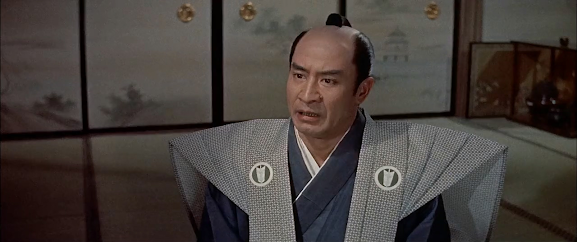






 a
a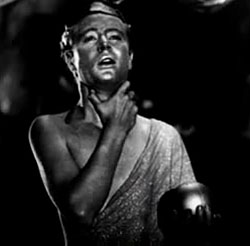
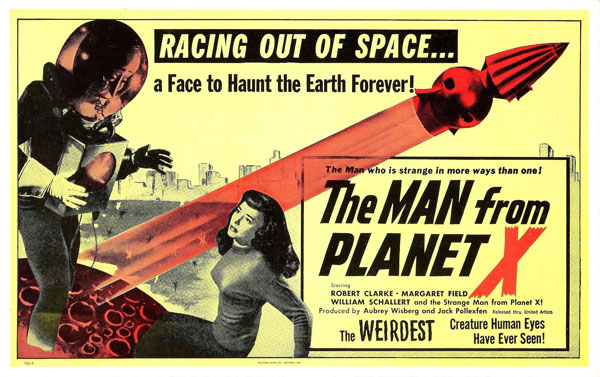

.jpg)


.jpg)



















